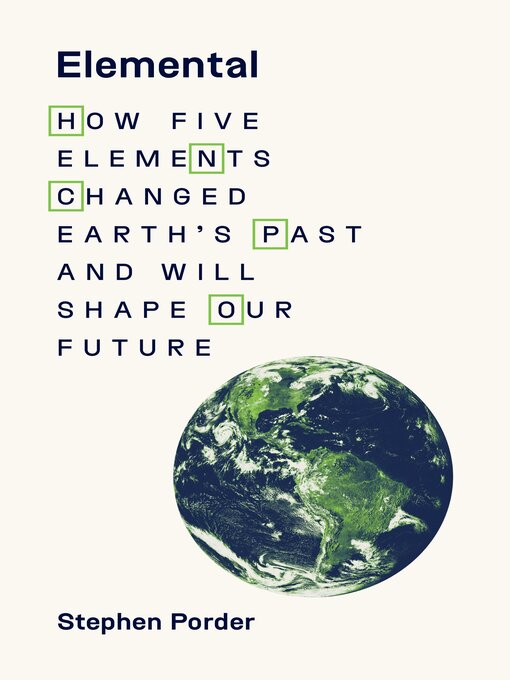An ecologist explores how life itself shapes Earth using the elemental constituents we all share
It is rare for life to change Earth, yet three organisms have profoundly transformed our planet over the long course of its history. Elemental reveals how microbes, plants, and people used the fundamental building blocks of life to alter the climate, and with it, the trajectory of life on Earth in the past, present, and future.
Taking readers from the deep geologic past to our current era of human dominance, Stephen Porder focuses on five of life's essential elements—hydrogen, oxygen, carbon, nitrogen, and phosphorus. He describes how single-celled cyanobacteria and plants harnessed them to wildly proliferate across the oceans and the land, only to eventually precipitate environmental catastrophes. He then brings us to the present, and shows how these elements underpin the success of human civilization, and how their mismanagement threatens similarly catastrophic unintended consequences. But, Porder argues, if we can learn from our world-changing predecessors, we can construct a more sustainable future.
Blending conversational storytelling with the latest science, Porder takes us deep into the Amazon, across fresh lava flows in Hawaii, and to the cornfields of the American Midwest to illuminate a potential path to sustainability, informed by the constraints imposed by life's essential elements and the four-billion-year history of life on Earth.
- Just Added eBooks
- Available Now!
- Your Next Great Read
- Just Added to Kemmerer Collection
- See all ebooks collections
- Just Added Audiobooks
- Available Now!
- Your Next Great Read
- Thrilling Listens
- See all audiobooks collections


